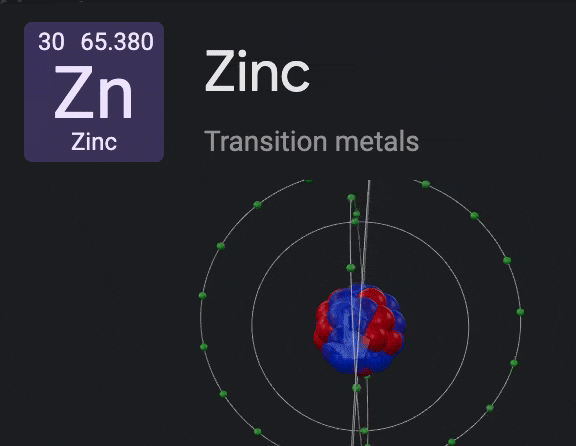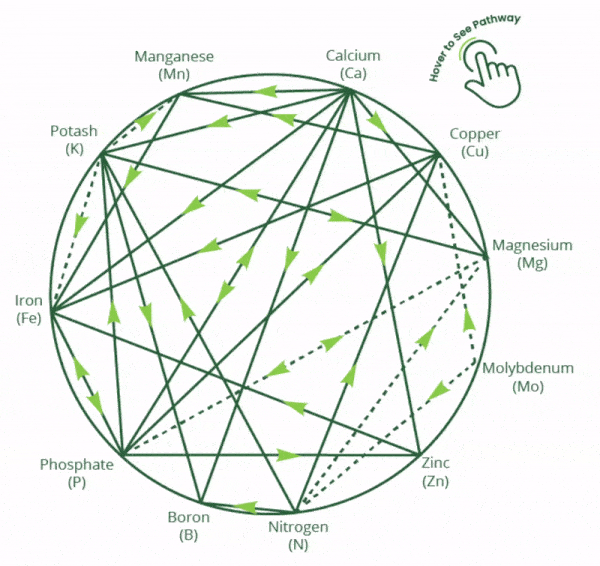8 Micronutrient Foliar Sprays: What Growers Should Know
According to Clemson University, there are seven essential micronutrients for crop utilization. These 7 essential micros are boron, zinc, manganese, iron, copper, molybdenum, and chlorine. Yet, less than 500 miles away, Ohio State University has added their 5 cents by listing an 8th, nickel.
Why is this important? While being aware of these nutrients, important factors such as timing and nutrient availability is essential information, just as much as the micronutrients themselves.
Understanding when to apply a specific micronutrient foliar spray, as well as what they do, can go a long way in protecting and increasing crop yield. It is also pertinent to keep in mind that foliar sprays need to be timed alongside existing trips over the field. Often, in the production of corn or soybeans, applications are limited to a post-emergence herbicide, along with the occasional fungicide or pesticide application. The unfortunate reality is that applications of nutrients often do not happen due to a lack of available time.
In many deficiencies in crop production, visible effects in the crop already indicate a future dip in production, in either volume or quality, regardless of the crop. Understanding when best to apply these micronutrient foliar sprays are essential at timing with existing application windows.
Manganese (Mn)
Function: Manganese takes part in hydrolysis, assisting iron in chlorophyll production, used in oxidation reduction processes.
Manganese Foliar Spray Timing:
The best time to make a manganese foliar spray is alongside a post-emergence herbicide application. This often happens at V4-V5 in corn and soybeans. Glyphosate is a powerful chelator and can grab onto available manganese, making it unavailable. This can induce manganese deficiency in a crop. Applying alongside the glyphosate can help prevent deficiency. As manganese is also involved in the photosynthetic processes of the plant, an earlier application is better.
CultivAce manufactures multiple foliar sprays containing manganese. K Ace+MN, MnAce, ZnAce + Mn.
Zinc (Zn)
Function: involved in energy metabolism, involved in synthesis of plant protein, controls synthesis of IAA.
Zinc Foliar Spray Timing:
The best time to apply zinc is alongside a post-emergence herbicide application. This often happens at V4-V5 in corn and soybeans. Glyphosate is a powerful chelator and can grab onto available zinc, rendering it unavailable. This can induce a deficiency in the crop. Applying a zinc acetate vs. zinc EDTA, alongside the glyphosate can help prevent this potential deficiency with better results. As zinc is also involved in energy metabolism, the earlier the application, the better.
CultivAce manufactures multiple zinc foliar sprays, ZnAce and 2-19-0-2Ca-2Zn, including an organic zinc foliar spray, Zinc 8, and our newest, most requested, ZnAce + Mn.
Iron (Fe)
Function: Necessary for the formation of chlorophyll, serves as an activator for biochemical processes such as respiration, photosynthesis, and nitrogen fixation.
Iron Foliar Spray Timing:
Often, iron applications will only be made in known soil situations prone to iron deficiency. Soil conditions that can cause iron deficiency would be high soil calcium soils, often experiencing calcium-induced iron chlorosis, high pH soils, saturated soils, and also poorly aerated soils. As such, the best time to apply iron as a micronutrient foliar spray, would be as early as possible to mitigate yield loss from any potential iron deficiency. It would be beneficial for a grower expecting to face an iron deficiency in season is to apply an iron foliar spray alongside their post-emergence herbicide application, which is usually done at V4-V5.
CultivAce manufactures a single iron foliar spray: FeAce - Iron Acetate.
Copper (Cu)
Function: Copper is an activator for plant enzymes, plays a role in protein synthesis, plays a role in photosynthesis, plays a role in respiration, pollen formation, and fertilization.
Copper Foliar Spray Timing:
Large applications of nitrogen and phosphate can tie up copper. High organic matter soils will also decrease copper availability. As copper plays a role in pollen formation and fertilization, i.e., reproductive functions. It is beneficial to add it prior to the reproductive stages of plants. In corn and soybeans, this would be in the late V stages. However, an earlier application is better if the application scenario involves a known copper deficiency.
CultivAce manufactures two products that could be utilized in a copper foliar spray. CuAce and Three Aces 2-20-0.
Boron (B)
Function: Boron is used in the differentiation of meristematic cells, used in the cell wall structure and cell wall pectins
Boron Foliar Spray Timing:
Boron is a highly leachable nutrient. Because of this, any micronutrient foliar sprays should be made in small, frequent applications. Since boron can be toxic to crops, application rates should be in the range of ounces.
CultivAce manufactures 10% Boron which can be used as a micronutrient foliar spray.
Molybdenum (Mo)
Function: Molybdenum is required for the utilization of nitrogen, it is also used in respiration by nitrogen-fixing biology.(BNF)
Molybdenum Foliar Spray Timing:
Molybdenum is used primarily by the N-fixing biology in legumes. To get the most out of the symbiotic biology, molybdenum used in micronutrient foliar spray applications should be made early on. However, molybdenum is toxic to ruminates, and thus, application quantities should be low.
CultivAce manufactures Bloom+Mo which can be used as a molybdenum foliar spray.
Nickel (Ni)
Function: Nickel is used to convert urea to ammonium.
Nickel Foliar Spray Timing:
Nickel is used in extremely low quantities by plants. Deficiency symptoms are exceedingly rare outside lab environments.
At this time, CultivAce doesn’t manufacture a nickel foliar spray
Chlorine (Cl)
Function: Chlorine is used in photosynthetic reactions, utilized mainly in managing turgor pressure.
Chlorine Foliar Spray Timing:
Chlorine deficiencies are rare outside the lab. Crops by the ocean will have ample chlorine. The use of KCL, also known as muriate of potash, is a commonly used source of potassium in the US. It contains more than enough chlorine to account for crop needs.
CultivAce does not currently manufacture a chlorine spray.
Micronutrient Assimilation
Understanding how these micronutrients coexist with macronutrients in the rhizosphere can be integral in avoiding deficiencies. Referencing the Mulder’s Chart because it illustrates the intricate relationships and interactions among each nutrient. Mulder's Chart, as detailed on CultivAce's website, highlights how the availability and uptake of one nutrient can influence others, showcasing both synergistic and antagonistic interactions.
For instance, the chart can demonstrate how the application of a micronutrient foliar spray, such as manganese or zinc, can affect the plant's absorption of other essential elements like iron or phosphorus.
This understanding is crucial for growers to optimize nutrient management, ensuring that the application of one nutrient does not inadvertently cause a deficiency or toxicity of another, thereby maintaining a balanced and healthy crop production system.
Overall, understanding and managing your micronutrient foliar sprays, especially their timing is crucial for optimizing crop health and yield. By referencing the Mulder's Chart in relation to their inputs and soil samples, growers can make informed decisions about nutrient applications, ensuring balanced nutrient uptake and avoiding potential deficiencies or toxicities.
By using a more robust, comprehensive approach, as a grower, you not only enhance the effectiveness of your micronutrient foliar spray but also integrate with existing crop management practices. By timing foliar applications with other field operations and crop stage, growers can maximize efficiency and ensure their crops receive the necessary nutrients at the optimal times while using our full line of acetate fertilizers.






















